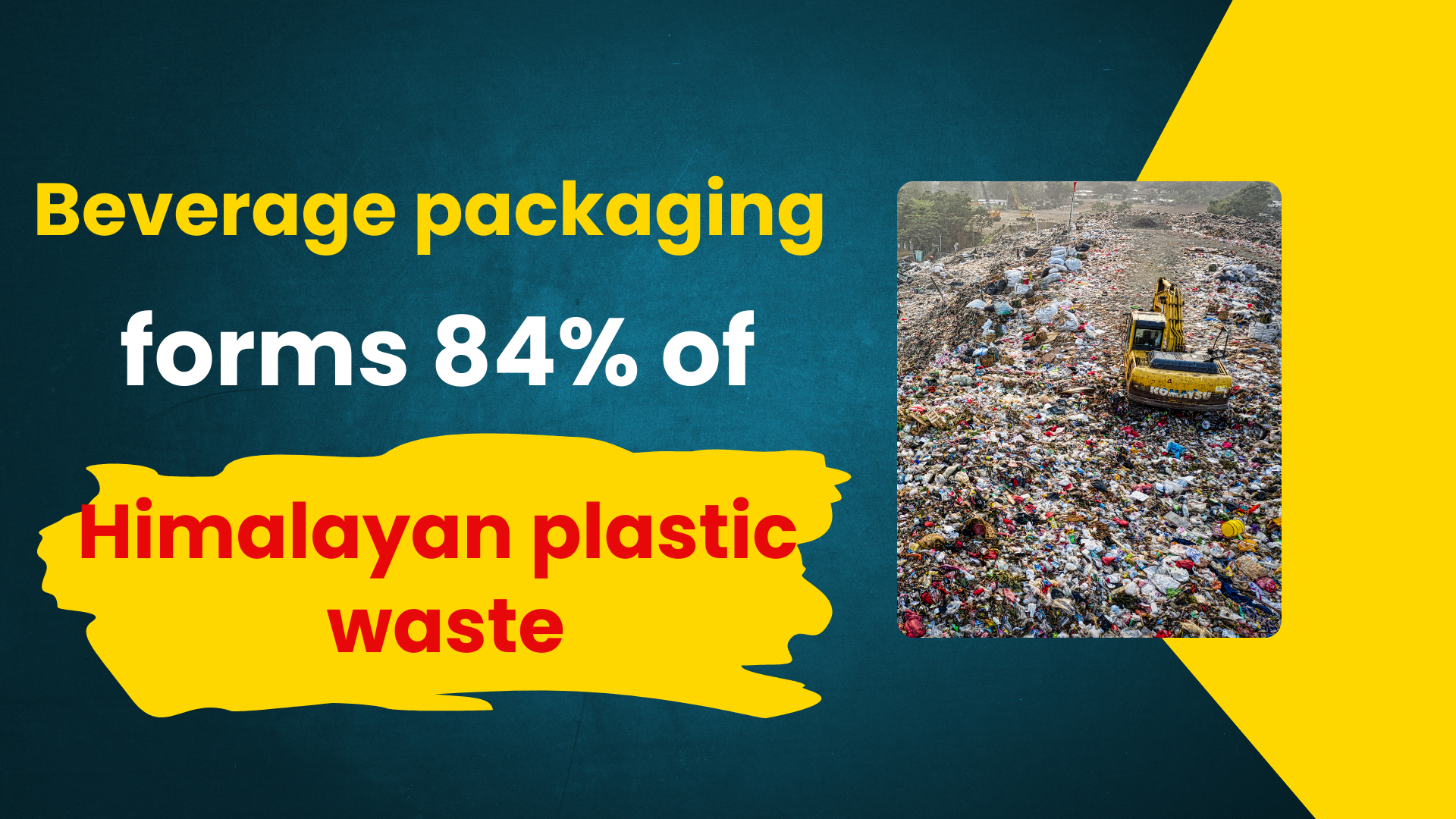
A recent analysis by the Zero Waste Himalaya Alliance shows that more than 84% of plastic waste generated in the Himalayan region has come from one-time food and beverage packaging. This alarming data brings to the fore the growing situation facing the eco-sensitive Himalayan belt. Over 70% of all collected plastic waste is non-recyclable. The report sheds light to expose the need for systemic policy changes and the undertakings beyond individual behavior that must be done to address the problem of increasing pollution from plastics.
Context:
-
84% of Plastic Waste: More than 84% of plastic waste in the Himalayan wasteland emanates from single-use food and beverage packaging.
Highlights of report:
-
Non-Recyclable Waste: Approximately 70% of the collected plastic waste is non-recyclable, contributing to worsening the waste management problem.
-
Waste Crisis: The Himalayan waste problem is production and systemic and not just a post-eating waste management problem.
-
THC Movement: THC movement has been useful in the creation of awareness and combating problems of plastic pollution since 2018.
-
Sikkim's Contribution: Sikkim was the top 2025 report waste generator, and a considerable number of plastic items in Darjeeling, West Bengal, had been audited.
About Plastic Pollution in India
India highest contributor to global plastic pollution
-
As recently reported in Nature, India has emerged as the biggest contributor to global plastic pollution, with about 1/5th of the global plastic waste.
-
India produces approximately 9.3 million tonnes of plastic annually, a number that is a lot higher than others such as Nigeria and China.
Data Point for the Plastic Pollution in India
-
India has 9.3 million tonnes of plastic waste a year with 5.8 million tonnes burned and 3.5 million tonnes discharged as debris.
-
The waste is mostly unregulated, made worse by informal recycling and open burning.
-
While India is struggling with waste management, the Global North has adequate systems for plastic waste.
Reasons for Plastic pollution in India:
-
Rapid Population Growth and Urbanization:
-
Serving as raw material for many products, the fast increasing population and urbanization results in demand for plastic products, especially for packaging materials which leads to increased plastic waste generation.
-
-
Inadequate Waste Management Infrastructure:
-
India’s waste management system lacks proper capacity to manage waste generated such that there are no sanitary landfills, but instead uncontrolled dumping sites.
-
-
Open Burning of Waste:
-
Not surprisingly, a large percentage of India’s plastic waste (5.8 million tonnes/year) is discarded through burning, contaminating the environment with dangerous toxins while contributing to the already high levels of air pollution.
-
-
Informal Sector Recycling:
-
Informal recycling sources that take care of a large proportion of plastics in India do so without any proper monitoring and contribute to the disassembly of figures. It is then hard to determine the exact nature of plastic pollution.
-
Issues with Mismanaged Plastic Waste:
-
Environmental Degradation:
-
Waste plastics block waterways and spoil marine environment and aquatic biodiversity. It also interferes with soil amenities and adds to air pollution when burnt.
-
-
Public Health Risks:
-
Long term health risks exist from microplastics in food and water. Burning disposed plastic waste also produces poison that damages respiratory system.
-
-
Economic Challenges:
-
The economic loss accumulated from the uncollected plastic packaging waste is significant amounting to a projected estimate of $133 billion by the year 2030.
-
-
Impact on Agriculture:
-
The contaminants of agricultural plastic waste in combination with poor wastewater treatment results in soil pollution in form of microplastic accumulation affecting soil nutriment and food safety.
-
Government Efforts for Plastic Waste Management:
-
Plastic Waste Management Rules, 2016:
-
Sets standards for the conservation of plastic waste based on collection, recycling and disposal.
-
-
Plastic Waste Management Amendment Rules, 2018:
-
Presents the initiatives such as phasing out generic non-recyclable multi-layered plastics, and setting up a central registry of producers and brand owners.
-
-
Plastic Waste Management Rules, 2021:
-
Bans specific single–use plastic items and implements the Extended Producer Responsibility (EPR) regime for plastic waste management.
-
-
Plastic Waste Management (Amendment) Rules, 2024:
-
Further enhances regulations on plastic waste collection and recycling and producers are obliged to see proper waste management.
-
-
Swachh Bharat Mission:
-
Targeting better management of waste machinery all over India including plastic waste through awareness of the public and better infrastructure.
-
-
National Clean Energy Fund (NCEF):
-
The NCEF is financing technologies to recycle or transform plastic waste into energy and thus providing the technological groundwork for sustainable waste management solutions.
-
-
India Plastics Pact:
-
An attempt to work with stakeholders from the plastic supply chain to reduce plastic waste through recycling and their reduction.
-
-
Extended Producer Responsibility (EPR):
-
The government is still trying to build EPR mechanisms to make producers accountable for their plastic products’ life cycle – from the collection to recycling.
-
Way Forward:
-
Circular Economy:
-
Promote RRR (Reduce, Reuse, & Recycle) in plastic design and waste management system. Establish recovery facilities and encourage the use of recycled plastics.
-
-
Smart Waste Management:
-
Integrate smart technology in waste management using IoT-enabled bins, AI for segregation mobile apps to report illegal dumping locations of recycling centers.
-
-
Strengthening EPR:
-
Graded fees may be imposed for hard to recycle plastics and extend EPR to the informal sector to enhance the state of waste pickers and their accountability.
-
-
Awareness Campaigns:
-
Launch national campaigns in various languages and include plastic waste learning in schools. Use influencers to preach plastic-free lifestyles and involve people in waste reduction.
-
-
Waste-to-Energy:
-
Make investments in high technology waste to energy technologies like pyrolysis and gasification to transform waste plastics to energy and ensuring stringent emissions control.
-
-
Green Procurement:
-
Apply plastic waste reduction criteria in the government procurement policies and government buildings as waste-free measurement milestones.
-
Conclusion:
The ever-increasing problem of plastic waste in the Himalayan region, which plays a major role in single-use food and beverage packaging, shows the absolute necessity of immediate policy-level interventions and system-level policy reforms regarding production and waste management. The ongoing work of such groups as the Himalayan Cleanup (THC), although necessary, is inadequate to the crisis, and there needs to be a move from centralized waste systems to sustainable, circular economy models.
UPSC Prelims PYQ
Q.1 Which of the following is/are the potential environmental impacts of plastic waste?
-
Plastic waste can block waterways and degrade marine biodiversity.
-
Plastics burning can cause air pollution and contribute to global warming.
-
Plastics degrade into microplastics, causing harm to soil, water, and food chains.
Select the correct answer using the codes below:
A. 1 and 2 only
B. 2 and 3 only
C. 1, 2 and 3
D. None of the above
UPSC Prelims PYQ
Q.2 With reference to the regulation of plastic waste in India, which of the following statements is/are correct?
-
The Plastic Waste Management Rules, 2016, were introduced to promote plastic recycling and sustainable disposal.
-
The Plastic Waste Management (Amendment) Rules, 2021, introduced a ban on specific single-use plastic items.
-
The National Clean Energy Fund (NCEF) is focused on reducing plastic waste through recycling technologies.
Select the correct answer using the codes below:
A. 1 and 2 only
B. 2 and 3 only
C. 1, 2 and 3
D. 1 only
UPSC Mains Practice Questions
Q.1 Recent study shows, "84% of Himalayan waste comes from food and beverages packaging." Discuss the key challenges posed by plastic waste in the Himalayan region and suggest policy-level solutions to address them. (150–250 words)
FAQs
Swachh Bharat Mission
EPR policies
India Plastics Pact



 Reintroduction of Asian Giant Tortoise in Nagaland: A Step Towards Community-Led Biodiversity Conser
Reintroduction of Asian Giant Tortoise in Nagaland: A Step Towards Community-Led Biodiversity Conser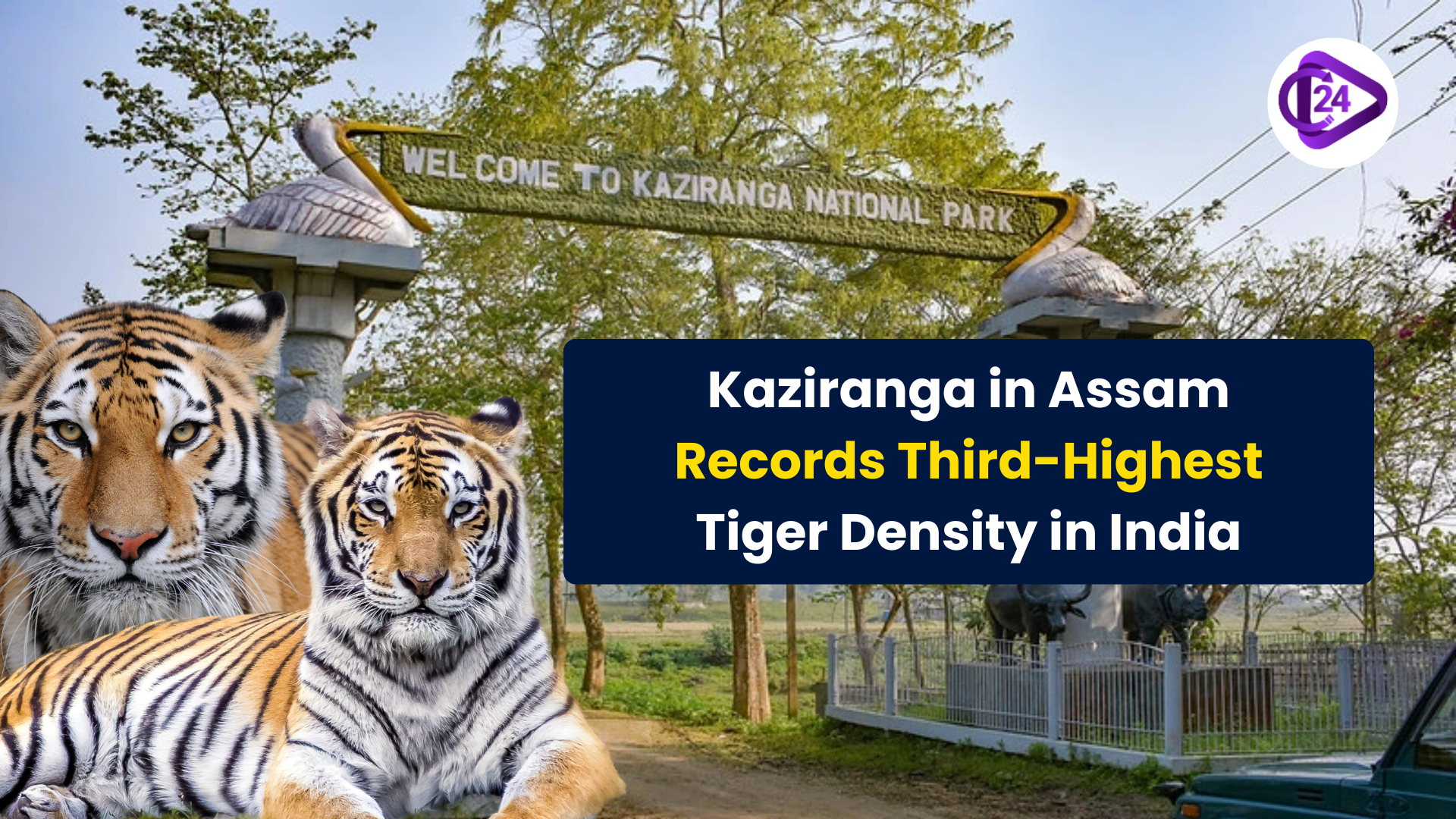 Kaziranga in Assam Records Third-Highest Tiger Density in India
Kaziranga in Assam Records Third-Highest Tiger Density in India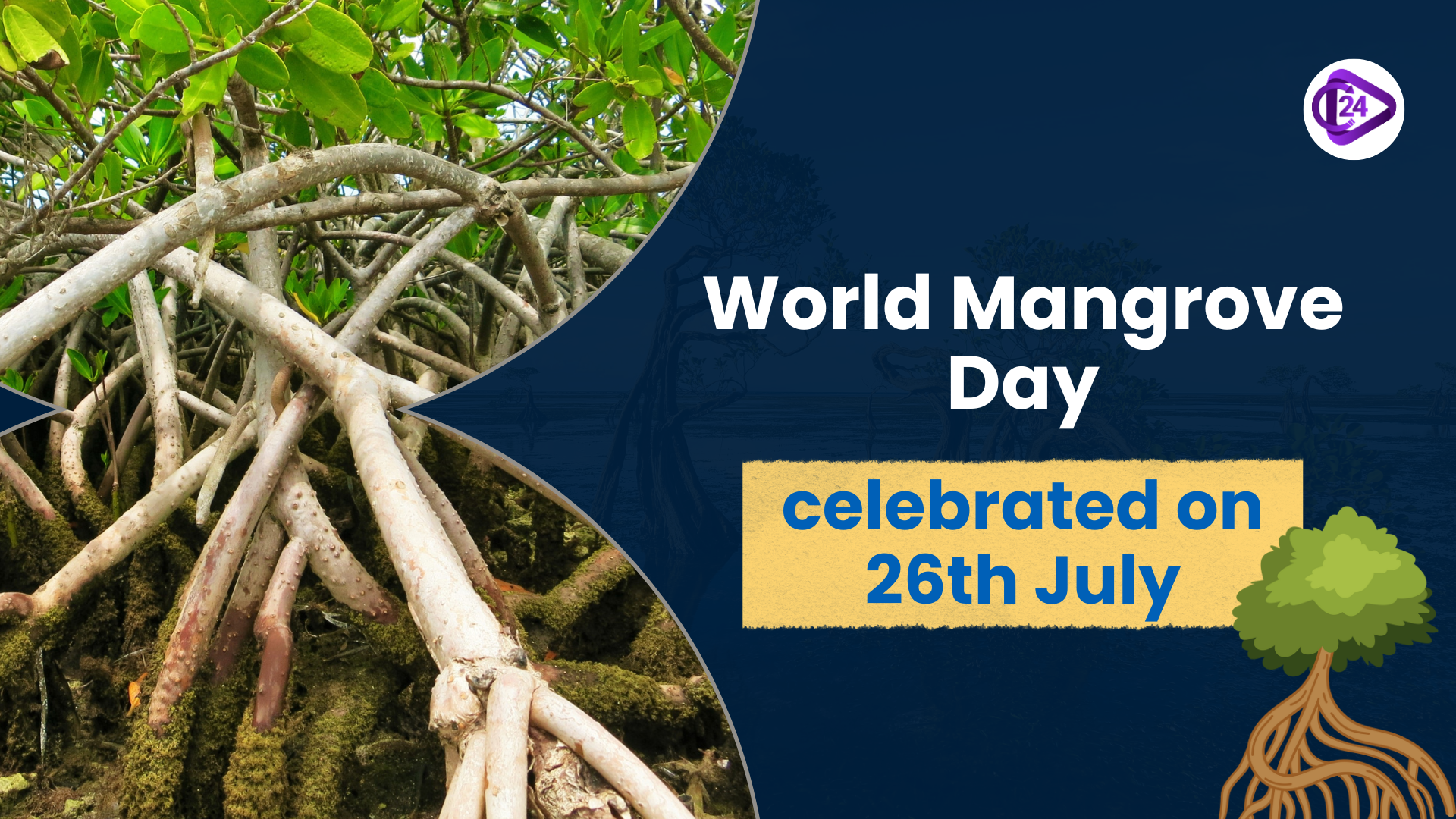 World Mangrove Day celebrated on 26th July
World Mangrove Day celebrated on 26th July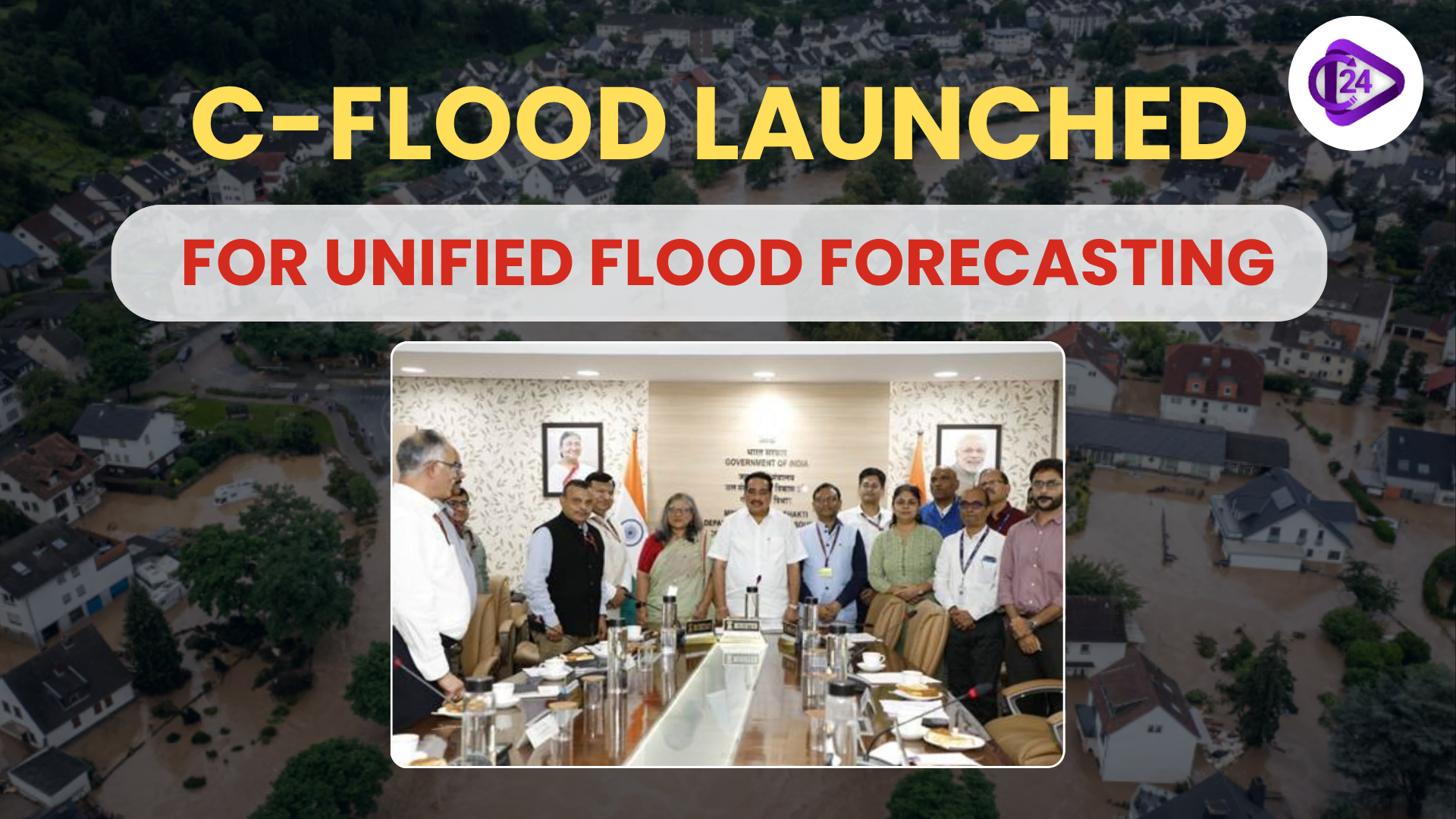 Union Minister Inaugurates C-FLOOD: India’s Unified Inundation Forecasting System
Union Minister Inaugurates C-FLOOD: India’s Unified Inundation Forecasting System Indian-Made Chemotherapy Drugs Fail Quality Tests Globally
Indian-Made Chemotherapy Drugs Fail Quality Tests Globally Government to Launch ‘NAVYA’ Pilot Initiative for Skilling Adolescent Girls Under Viksit Bharat@2047
Government to Launch ‘NAVYA’ Pilot Initiative for Skilling Adolescent Girls Under Viksit Bharat@2047 AviList: The First-Ever Unified Global Bird Species Checklist Launched
AviList: The First-Ever Unified Global Bird Species Checklist Launched New Jumping Spider Species Discovered in Southern India
New Jumping Spider Species Discovered in Southern India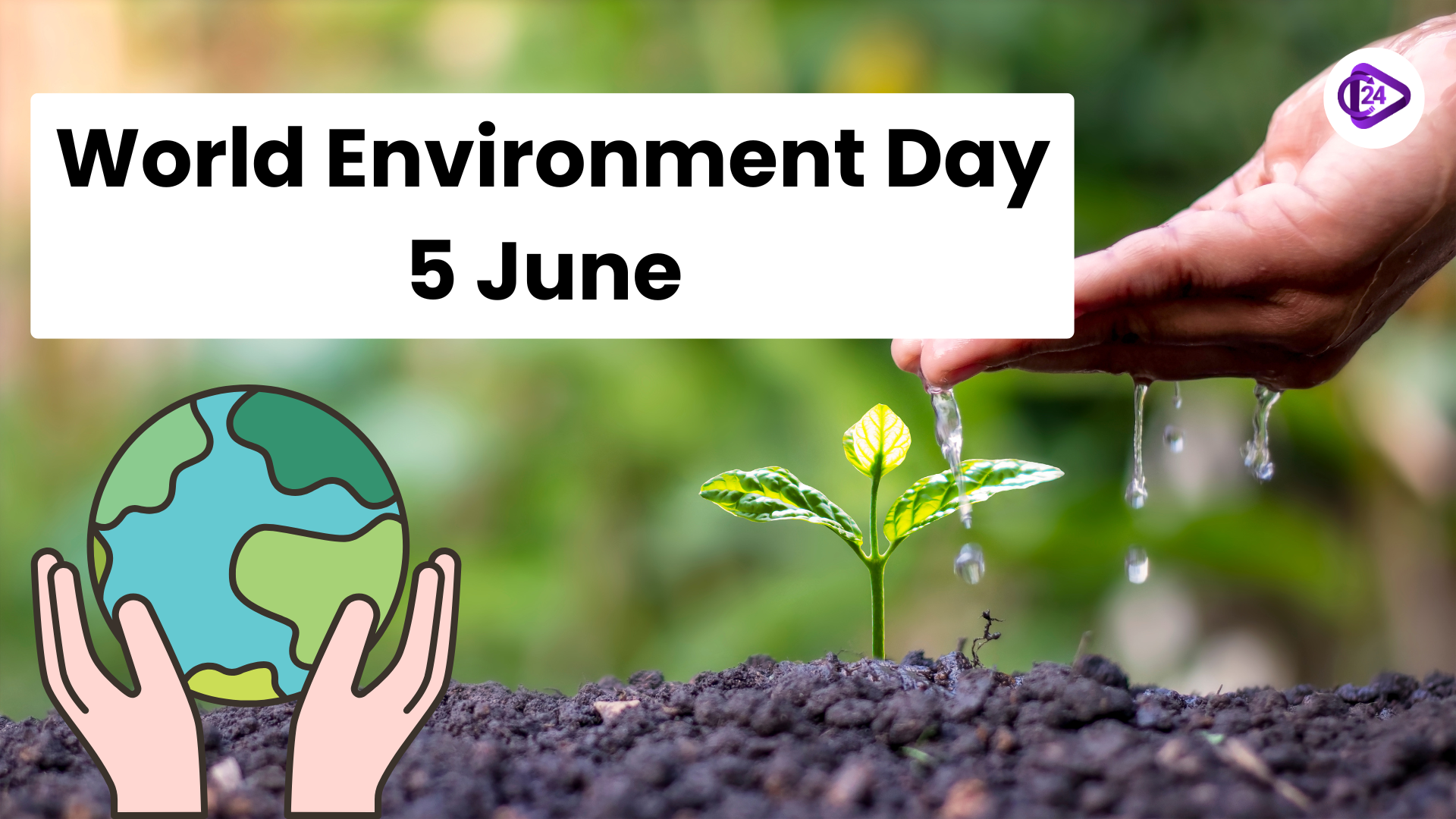 World Environment Day 2025: “Beat Plastic Pollution”
World Environment Day 2025: “Beat Plastic Pollution”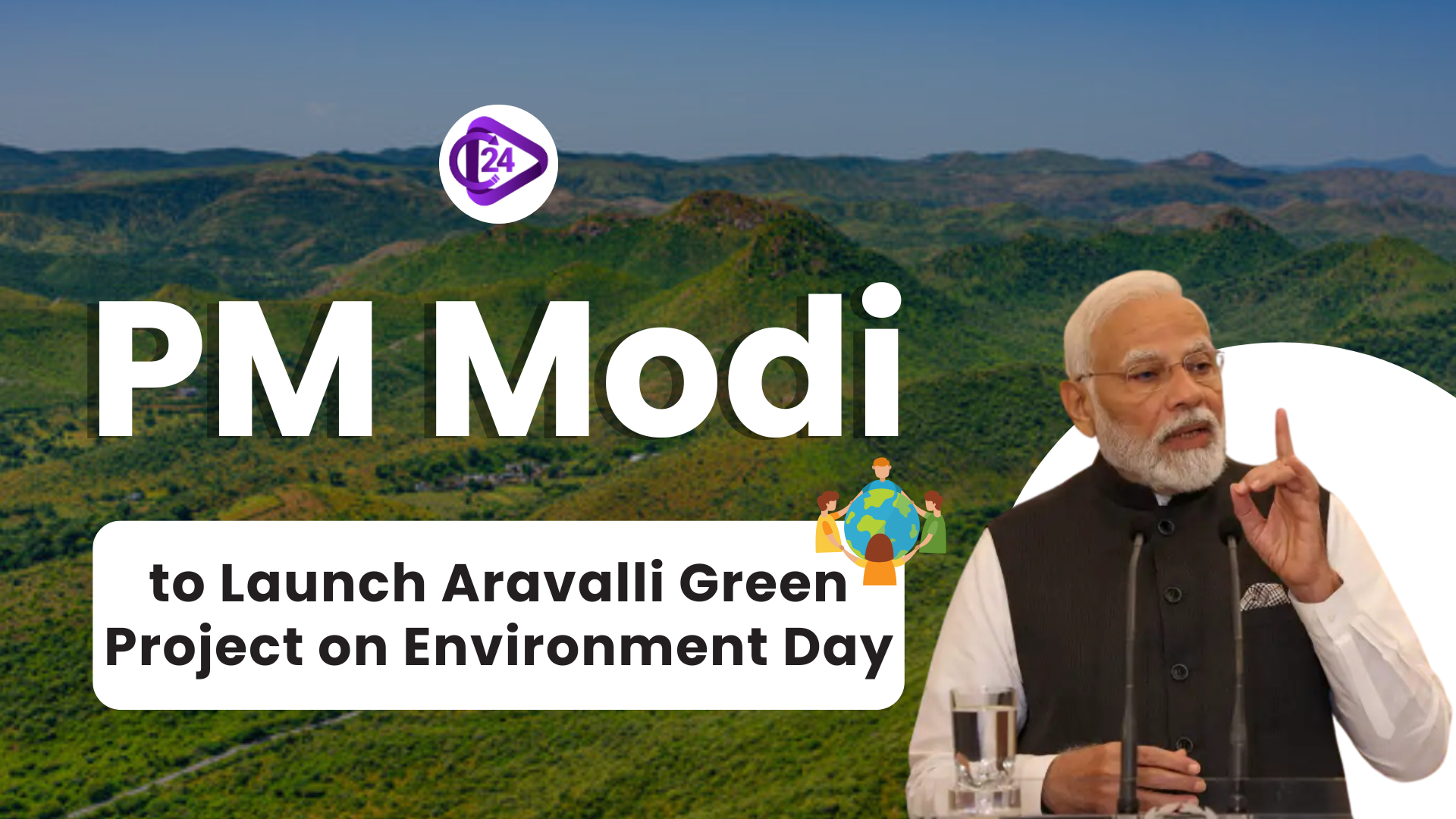 PM Modi to Launch Aravali Green Wall Project 2025
PM Modi to Launch Aravali Green Wall Project 2025






